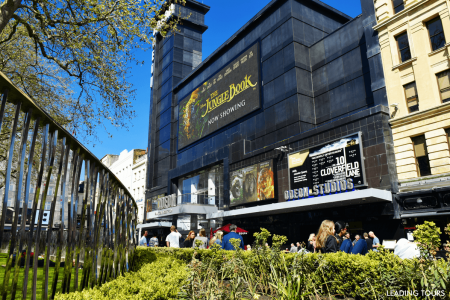Leicester Square is a pedestrianised square in the West End of London. The Square lies within an area bound by Lisle Street, to the north; Charing Cross Road, to the east; Orange Street, to the south; and Whitcomb Street, to the west. The Square is named after Robert Sidney, 2nd Earl of Leicester, who purchased four acres (1.6 hectares) in St. Martin’s Field in 1630; by 1635, he had built himself a large house, Leicester House, at the northern end. The area in front of the house was then enclosed, depriving inhabitants of St Martin in the Fields parish of their right to use the previously common land. The parishioners appealed to King Charles I, and he appointed three members of the privy council to arbitrate. Lord Leicester was ordered to keep part of his land (thereafter known as Leicester Field and later as Leicester Square) open for the parishioners. In the middle of the Square is a small park, in the centre of which is a 19th-century statue of William Shakespeare surrounded by dolphins. The four corner gates of the park had one bust each, depicting Sir Isaac Newton, the scientist; Sir Joshua Reynolds, the first President of the Royal Academy; John Hunter, a pioneer of surgery; and William Hogarth, the painter. The most recent addition was a statue of film star and director Charlie Chaplin. On the pavement were inscribed the distances in miles to countries of the former British Empire. After the refurbishment of the square, which lasted from December 2010 to May 2012, only the statue of Shakespeare still remains on the square today.
Leicester Square
Leicester Square, London WC2H 7DE
Leicester Square and Piccadilly Circus







